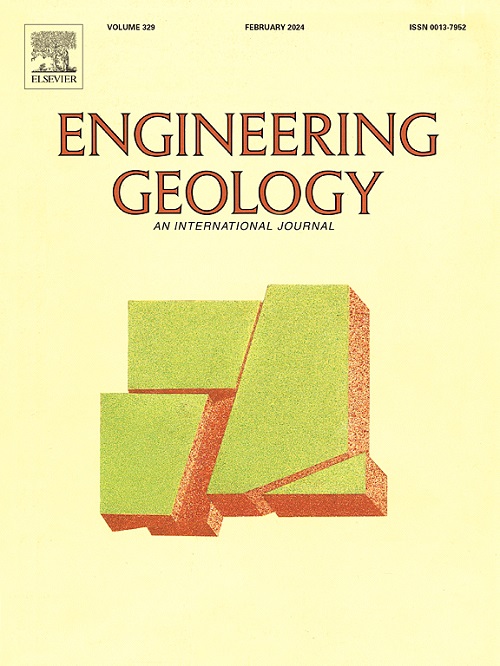Ancient very large and giant landslides on the eastern margin of the Qinghai–Tibet Plateau, China
IF 6.9
1区 工程技术
Q1 ENGINEERING, GEOLOGICAL
引用次数: 0
Abstract
The migration of massifs on the eastern margin of the Qinghai–Tibet Plateau (QTP) in the middle to late Cenozoic and the collision with stable blocks on the northwestern margin of the Yangtze Plate governed the rapid rock uplift and erosion of local surfaces, leading to the widespread occurrence of various types of large-scale landslides. An anomalously high concentration of very large and giant landslides (VLGLs) is found around the Bailongjiang block on the eastern margin of the QTP. While these landslides are commonly attributed to active faults, the diversity of landslide types and complex spatial relationships prompt further investigation into the tectonic mechanisms influencing their formation and evolution. In this study, we identify and validate 140 ancient VLGLs, each with an area ≥ 1 km2, in the Bailong River Basin. We analyse the spatial distributions, geomorphological characteristics, and necessary controlling and triggering factors of various landslide types in the region. On the basis of limited chronological data, we infer potential periods of landslide formation by examining these controlling and triggering conditions. The results suggest that the primary driver of VLGLs development was the collision between the Bailongjiang block and the Bikou massif. Earthflows along the eastern margin of the Bailongjiang block are influenced mainly by faults, lithology, uplift, and river downcutting and are induced by rainfalls. The current landslide landscapes likely formed during the last interglacial period, following the onset of the Gonghe movement. The southern margin of the Bailongjiang block is characterized by compression uplift and degradation of the rock mass strength, and earthquakes act as triggers for debris slides. The coupling of these three factors indicates the potential for periodic patterns in landslide development within this region.
中国青藏高原东部边缘的古代特大滑坡
中晚新生代青藏高原东缘地块的迁移和与扬子板块西北缘稳定地块的碰撞控制了局部地表的快速隆升和侵蚀,导致各种类型的大型滑坡广泛发生。在青藏高原东缘白龙江地块周围,发现了异常高浓度的超大型滑坡。虽然这些滑坡通常被归因于活动断层,但滑坡类型的多样性和复杂的空间关系促使人们进一步研究影响其形成和演化的构造机制。在白龙江流域,对140个面积≥1 km2的古vlgl进行了识别和验证。分析了该地区各种滑坡类型的空间分布、地貌特征以及必要的控制和触发因素。根据有限的时间数据,我们通过检查这些控制和触发条件来推断滑坡形成的潜在时期。结果表明,白龙江地块与碧口地块的碰撞是vlgl发展的主要驱动力。白龙江地块东缘土流主要受断裂、岩性、隆升和河流下切等因素的影响,并受降雨的诱导。目前的滑坡景观可能形成于共和运动开始后的末次间冰期。白龙江地块南缘以压缩隆升和岩体强度退化为特征,地震是引发岩屑滑坡的主要因素。这三个因素的耦合表明了该地区滑坡发展的周期性模式。
本文章由计算机程序翻译,如有差异,请以英文原文为准。
求助全文
约1分钟内获得全文
求助全文
来源期刊

Engineering Geology
地学-地球科学综合
CiteScore
13.70
自引率
12.20%
发文量
327
审稿时长
5.6 months
期刊介绍:
Engineering Geology, an international interdisciplinary journal, serves as a bridge between earth sciences and engineering, focusing on geological and geotechnical engineering. It welcomes studies with relevance to engineering, environmental concerns, and safety, catering to engineering geologists with backgrounds in geology or civil/mining engineering. Topics include applied geomorphology, structural geology, geophysics, geochemistry, environmental geology, hydrogeology, land use planning, natural hazards, remote sensing, soil and rock mechanics, and applied geotechnical engineering. The journal provides a platform for research at the intersection of geology and engineering disciplines.
 求助内容:
求助内容: 应助结果提醒方式:
应助结果提醒方式:


